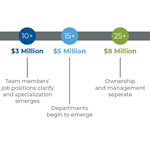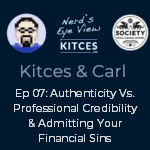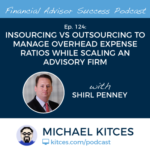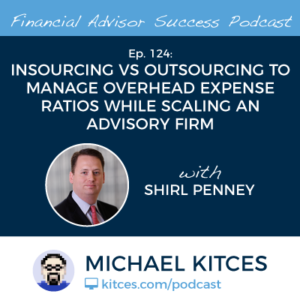One of the fundamental challenges in growing an advisory firm beyond just the founder (and a handful of people to support him/her) is that a growing number of employees necessitates a greater amount of organizational infrastructure to support the people. From a human resources person (or eventually team) to the emergence of mid-level management, and the eventual erosion of decision-making efficiency as more partners/owners are introduced… it’s not uncommon for advisory firms that are growing to suddenly lose momentum, precisely because their growth causes the current structure of their organizational chart to break down and lose its effectiveness.
In this guest post, practice management guru Philip Palaveev of The Ensemble Practice shares his perspective on how, exactly, an advisory firm’s “org chart” should change an evolve as the business grows. Because the reality is that when it comes to advisory firms, one size does not fit all when it comes to the proper structure of an org chart… not just because different advisory firms have a different focus and style, but because the needs of the organization itself will vary depending on whether there are 10, 25, or 50+ employees.
The starting point of a formal organizational chart structure typically emerges by the 10th employee, when it’s not enough to just have “people” who accomplish various roles in the business. Instead, formal (and increasingly specialized) roles begin to emerge in the firm, and the firm begins to set forth “positions” (that certain people may fill), rather than just gather together a growing number of people.
By 15+ employee, the growing specialization of positions within the firm begins to form departments, where multiple employees who share in a certain functional role within the firm (e.g., the investment team, the operations team, the advisory team) begin to form into groups, with multiple tiers of positions within the department that begin to create the future career tracks within the firm.
With continued growth past 25 employees, the advisory firm becomes so large and complex that there is typically a need for “full-time” management of the firm (e.g., a Chief Operating Officer), beyond just having founders who wear the hat of owner, leader, and advisor with clients. In fact, by 25+ employees, it’s not uncommon for ownership and management to begin to separate altogether, as not all partners necessarily can (or need to) have a role in the actual management of employees.
By the 40-employee headcount, the founders are often so distant from the end-employees and the meetings they’re having (both internally, and with clients), that true "culture" begins to emerge… a standardized set of norms that define what typically occurs in the firm even when no one is watching. Which in turn necessitates a growing focus on defining what the firm’s formal culture is… because it’s simply not possible for the founders to fully manage (or have much interaction at all) with everyone in the org chart.
And as advisory firms cross the 50-employee threshold, the size of the firm often mandates a “representative governance” model, as the firm often introduces enough owners/partners that it’s not even effective to give every partner a “seat at the table” anymore. Instead, a Board of Directors tends to form, and decisions are made by the Board and the firm’s management team, which the partners represented by certain members of the Board (but without the direct involvement of them all).
The key point, though, is simply to recognize that advisory firms tend to go through consistent challenges as their employee headcount and “org chart” reach a certain size and complexity thresholds… which, notably, are based not primarily on revenue, but actually on the number of people in the org chart (who must be connected to each other and managed). For which, hopefully, this article will serve as a helpful guide about how advisory firms who are “stuck” on how best to design (or restructure) their own Org Chart can move on to the next level.








 Welcome back to the 124th episode of Financial Advisor Success Podcast!
Welcome back to the 124th episode of Financial Advisor Success Podcast!

